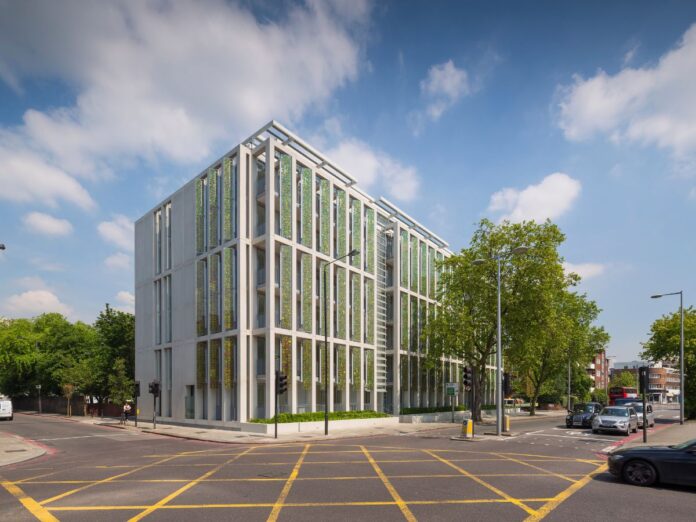Benefits of a Project with a BREEAM Certification
The primary environmental scoring system and evaluation approach for construction and infrastructure projects worldwide is called BREEAM (Building Research Establishment Environmental Assessment Methodology). There is an important excuse why more than 260,000 structures in more than 50 nations are BREEAM-certified today. You may gain from creating or running a BREEAM-accredited structure in more areas than you could count.
You can:
- Strictly adhere to pertinent environmental laws and regulations.
- Minimise the running and remodelling expenditures of your building.
- Guarantee the lifespan and durability of your project.
- Guarantee the renters’ and users’ safety and comfort.
- Quickly and easily draw in investors and tenants.
- Improve the standing and reputation of your business in its field.
- Profit from high benefits on your investment.
How Does BREEAM Excellent Get Attained?
The most sought-after accreditation is BREEAM Excellent. A specialist BREEAM Assessor must be appointed to manage your application as the preliminary stage towards receiving excellent accreditation. The BREEAM accredited Assessor certification is held by a BREEAM Assessor, who also possesses the abilities, know-how, and authorisation required to carry out the Breeam certification procedure on your structure or initiative. A minimum score of 70% is required for a proposal to be given the BREEAM Excellent status. This percentage is determined by how many “credits” a building receives. There is a total amount of potential credits associated with each of the several groups, including waste and water.
The amount of credits earned for each category is used to determine the final score. A building must prove its sustainability credentials across the board—not just inside one particular area—to receive BREEAM certification. Depending on what is thought to be among the most important in terms of sustainability, some areas are assigned larger weightings than others. Based on whether a structure is residential or commercial, this weighting may change.
The Process for Getting a BREEAM Rating
The degrees of sustainability of a building is determined by assessors using strict criteria and standards. As a result, if getting your desired BREEAM grade is important to you, you must take the essential steps to ensure success. The procedures for gaining BREEAM accreditation are listed below.
1. Select the BREEAM System That Is Appropriate for Your Project.
To be well-prepared for planning policies, you must first determine the BREEAM method or technical standard that applies to your project. This can be accomplished by figuring out the building’s current life cycle. Here is a short guide to get you started:
- Buildings in the planning phase can benefit from BREEAM Communities.
- For projects in the design and building phases, there is BREEAM New Construction.
- BREEAM In-Use – for structures that are being used right now.
- For buildings that you want to renovate or enhance, use BREEAM Refurbishment and Fit-Out.
- For projects involving civil engineering and infrastructure, use BREEAM Infrastructure.
2. Select An Appraiser
The following step is finding a certified and experienced BREEAM assessor.
The key duties of an assessor include:
- Registering projects or assets and doing assessments.
- Calculating the BREEAM rating and degree of conformity with the pertinent BREEAM criteria for a building.
- Requesting Breeam certification
To obtain a higher BREEAM rating, you can also think about engaging with a BREEAM AP (Accredited Professional). To ensure that your design team and you come up with the best solutions to guarantee scheme conformity, a BREEAM AP will use their expertise and knowledge to assist you. They also can help you define goals for and track the progress of your project. Always make sure that your design team and the BREEAM assessor or AP have open lines of communication whenever working together. This will make compliance easier to achieve and the Breeam certification program simpler.
3. Perform a Pre-Evaluation
With a BREEAM pre-assessment, your selected assessor would utilise a pre-assessment calculator to forecast the prospective rating for your project. A BREEAM pre-assessment can assist you in comprehending where your project is right now in terms of sustainability and adherence to BREEAM criteria, even if the results are not verified and the rating you can receive is not final.
4. Sign Up for an Examination
Your project will be registered for assessment by the BREEAM assessor of your choice as part of their services. Keep in mind, nevertheless, that this registration must be finished as soon as feasible throughout the evaluation process.
5. Obtain a Licence
Obtaining BREEAM certification is the last step in the BREEAM accreditation process. Projects evaluated under any scheme, except BREEAM In-Use, may be accredited during the development or post-construction phases. All of the proof of compliance would be provided by your BREEAM assessor to BRE for quality assurance (QA) and accreditation. Following that, BRE will award the certificate and include your initiative on GreenBook Live, a database of sustainable and eco-friendly goods, resources, and services. Obtaining BREEAM certification is the last step in the BREEAM accreditation procedure. Projects evaluated under any scheme, except BREEAM In-Use, may be accredited during the design or post-construction phases.
Final Words
You can gain from a BREEAM-certified project in a variety of ways. You’ll be able to demonstrate your dedication to developing sustainably and ecologically, and it’ll also help you get a bigger return on your investments.
Also, read: How CCTV Can Be Used As A Security Measure?



